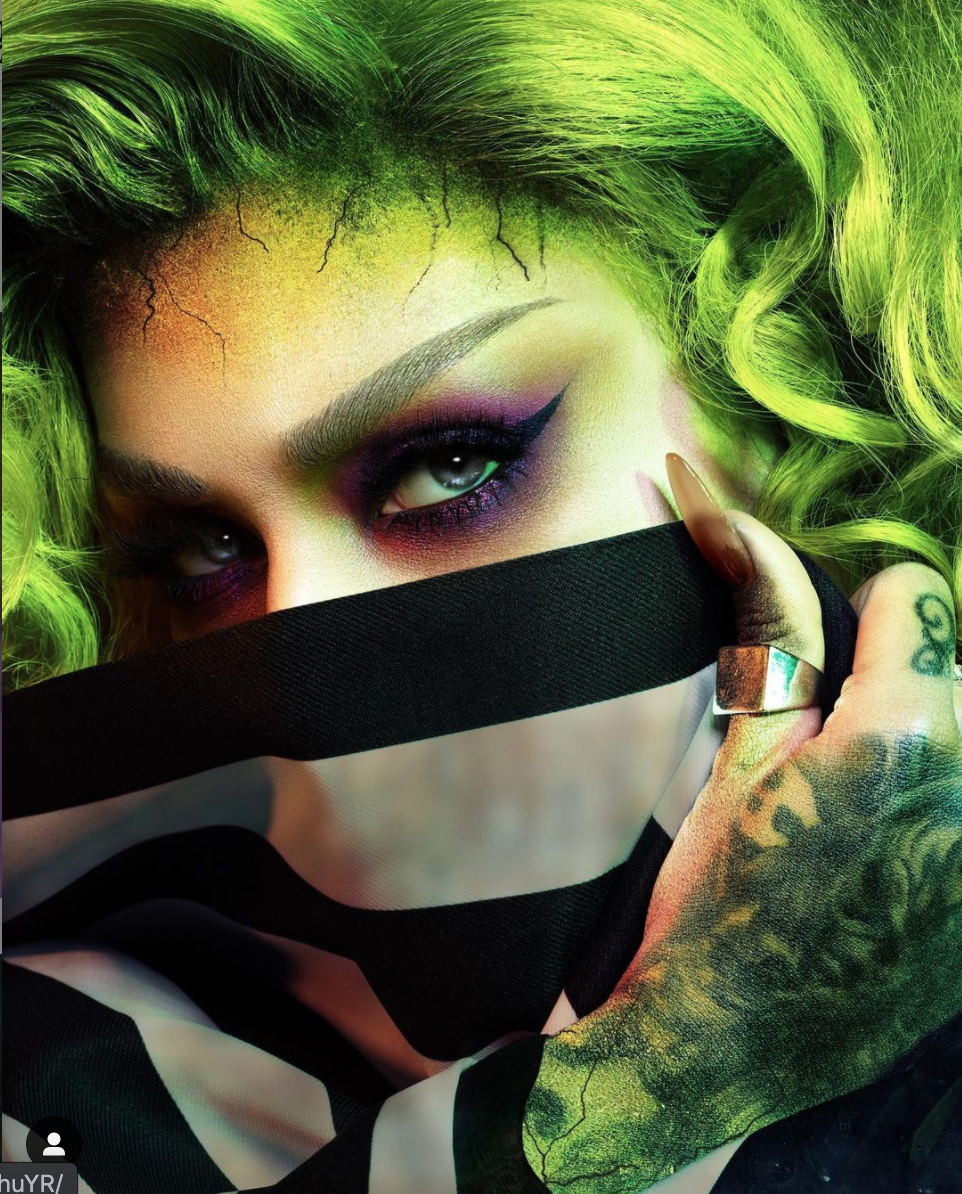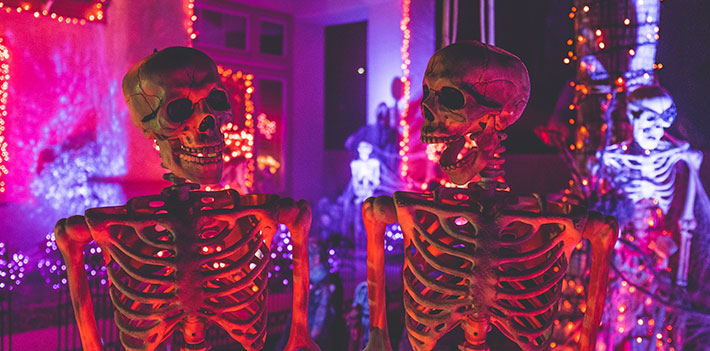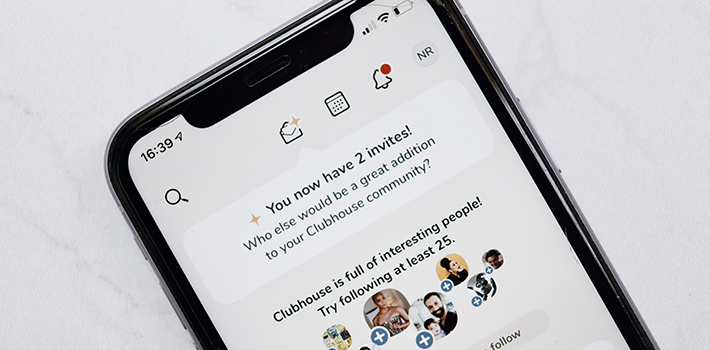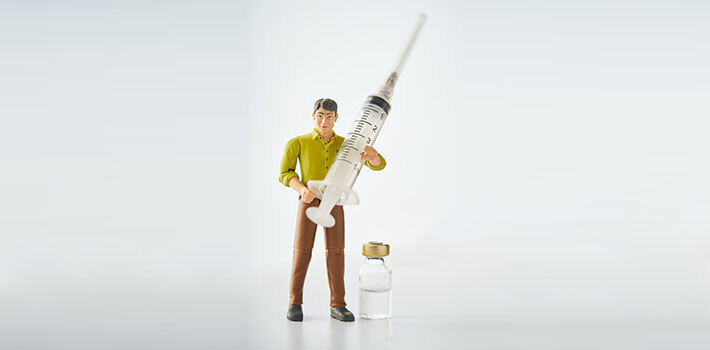Let’s not beat around the pumpkin patch – Halloween is freaking fantastic.
It’s the one night kids get to be whoever they want, and we adults get to be kids again.
From the decorations and the costumes to the horror nights and the films, somehow, Halloween has become an international ecosystem of festivities that rivals Santa Claus himself.
And boy do consumer brands know it.
Last year, Forbes projected that the holiday would gross $8.8 billion in the US alone. And this year, despite the COVID madness, the numbers are set to increase.
So, naturally, retailers tend to ramp up their marketing efforts around the holiday every year to ring in as much of that potential consumer spend as they can.
In fact, as soon as the clock strikes 12 on October 1st, the barrage of promotions is in full throttle for the next 30 days.
From themed products to corny discount codes, the Halloween theme is played out ad nauseam.
And, unfortunately, that means that it’s frighteningly easy for your brand’s holiday marketing efforts to fade into the crowd.
In fact, if you’re not creative enough, you’re pretty much guaranteeing your spot among the pack of brainless zombie ads, mindlessly chasing consumer money with no true substance to offer.

Hence the importance of this article.
We’re going to go over 3 of the most successful Halloween marketing campaigns to ever grace our industry and analyze the marketing techniques they used.
Burger King’s #ScaryClownNight
Back in 2018, Burger King launched a campaign that gave free whoppers to customers attending select stores dressed as clowns on Halloween night.
The goal was to drive traffic to their physical stores as well as generate online attention.
https://www.youtube.com/watch?time_continue=1&v=2ni3jN_DH20&feature=emb_title
The ad was brilliantly conceptualized around a killer tagline that was born to go viral.
Come as a clown, eat like a king.
With over 2.1 billion impressions and over 1100 articles written about it in 40 countries, the ad was an absolute hit, and the campaign is still being hailed today as one of the greatest Halloween promotions ever.
So why was it so successful?
Well, quite simply, it hit the trifecta.
The concept of the clown allowed Burger King to:
- Playfully and tastefully troll their greatest competitor, McDonald’s.
- Capitalize on cultural relevance, as the ad coincided with the long-awaited release of the remake of the 80s cult classic “IT” (nostalgia is a huge factor here too, but we will discuss that later on in the article)
- Achieve virality not just online, but IRL as the promotion encourages active engagement from customers.
Making the ad so creative, cinematically well-produced, and chock-full of popular movie references meant that Burger King wasn’t just invasively advertising its burgers to its audience.
Instead, it was providing them with the very type of entertaining content they tend to seek out around this time of a year, with a humorous twist to make the ad so easily shareable.
Pure perfection.
So how can you implement this in your own campaigns if you don’t have a super well-known rival company to poke fun at?
Well, you can apply similar techniques and adapt them to your circumstances.
- If you don’t have a well-known rival to tease, why not troll a common problem your consumers face or a typical advertising trope you and your competitors use? Keep it light, keep it relatable, and keep it relevant. Remember to show your audience that they can share a joke with you because you see them and you understand their experiences.
- Use what is trending in your industry to your advantage, but find a way to incorporate it creatively into the campaign. So long as it’s relevant to your brand, you can hop on a trend but do so with a twist. Don’t just jump on the hashtag or create boring content that simply ticks the keyword box, but does not engage your audience.
- Recognize that the goals of your marketing campaign can be multi-faceted. A lead-generation campaign can also be a branding campaign if enough creativity is put into it. Try not to pigeon-hole your marketing efforts, but rather find ways to make adverts that are stand-alone pieces of entertaining content. This will achieve virality while fulfilling the wildest lead generation goals of your dreams.
Jimmy Kimmel’s “I Told My Kids I Ate All Their Halloween Candy”
A good Halloween campaign doesn’t always have to push people to whip out their credit cards. It’s often just about generating quality engagement.
And no one has been better at this than Jimmy Kimmel, who started his I Told My Kids I Ate Their Halloween Candy challenge back in 2011.
Every year, parents around the country play the same prank on their kids and send in the footage. Not surprisingly, this creates the most shareable, memorable, and heart-warming (free) content overnight.
(Disclaimer: last year, Kimmel used it to promote his children’s book, the proceeds of which he donates to children’s hospitals. However, the bit started just as a way to have fun and interact with audiences)
The segment is a well-loved show tradition that has amassed hundreds of millions of views over the years. And once again, its success is multi-faceted:
- In order for the segment to exist, it inherently requires audience participation, thus making the target demographic feel involved and invested in your content. This creates the type of engagement most brands can only dream of.
- The concept of the segment means that the barriers between the show and the audience are broken, as the audience willingly invites the brand into their home. This also creates a stronger inter-community bond among viewers.
- The content created is entertaining, free, and evergreen, meaning that it’s not just viral upon release, but it’s got legs for years to come.
- The ‘tradition’ aspect of the segment provides a comforting consistency that audience members love to rely on. This continuity strengthens the bond between the show and the audience and perpetuates the association between the brand and the holiday.
So, if we don’t have our own talk shows, what can we take from that and apply to our own marketing efforts?
Well, for starters, don’t be afraid to create your own traditions. Halloween or otherwise.
- Traditions are what they are because of the comfort they bring us. It makes us feel warm and fuzzy inside to do the same things over and over again each year. So find something that your audience can associate with your brand for the foreseeable future. Give them the comfort, sometimes, of knowing exactly what to expect of you.
- Not all campaigns need huge budgets. Think outside the box and use what you have. If your community and audience can participate in the concept – use it to your advantage. It will save you money, increase engagement, and strengthen the emotional connection your audience has with your brand.
- Branding campaigns don’t always have to be about you, your product, or your services. They can be about your community, about social issues, or just about having some fun. Don’t get bogged down with ROIs or aesthetics. Sometimes, campaigns like this do more for your brand’s reputation than any sponsored promotion or corporate video you could ever put together.
Stranger Things x Top Shop
This campaign was a collaboration between popular retailer Top Shop and the Netflix hit series Stranger Things.
The two powerhouses united to create a wide range of themed merch, as well as an incredibly immersive in-person experience that recreated iconic sets from the show in TopShop’s London flagship stores.
The event was a success for many reasons:
- It was a pop-up, which created a huge sense of urgency among fans of the show who flocked to the city to experience it all for themselves.
- The involvement of Stranger Things meant that TopShop’s customer base was instantly expanded. Fans of the show who may not have had any interest in TopShop itself would now undoubtedly become customers of the retailer.
- The launch coincided perfectly with Halloween as well as the release of the long awaited second season of the show, thus capitalizing on the hype from both.
But in order to understand why this was such a success, we must also delve into why Stranger Things itself was such a hit.
The show’s storyline is essentially a love letter to the 80s horror genre. From IT and The Goonies to Ghostbusters and Gremlins, the series is steeped in nostalgia for all that is old-school horror. Incidentally, this also plays into why the Burger King commercial was such a success.
With its imagery, fashion (a perfect segue for TopShop), and music, the series creates a world a lot of us ache to revisit.
And as Don Draper famously said, nostalgia is “delicate, but potent”. When used correctly, it can create the most solid and intimate of bonds between your audience and your brand.
Just look at all the cosmetics brands who are selling out collections faster than they can make them. From Colourpop’s Hocus Pocus collection to Lunar Beauty’s MoonSpell collection based on iconic 90s witches, to the upcoming Melt Cosmetics x Beetlejuice collab, the sales are through the roof.

In a nutshell, Stranger Things x TopShop had it all. Nostalgia, virality, creativity and a unique in-person appeal to hammer home the experience.
So how can we learn from this dream collab?
- Don’t be afraid to partner up with another brand that relates to your audience in a way they might not have expected. Know your target audience and their interests enough to bring them the collaboration that they didn’t even know they needed.
- Nostalgia is a powerful emotion. Use it when possible, but use it tastefully. Not only does it do wonders for engagement, but it also creates a deeper bond between your audience and your brand. Above all, you need to make sure your campaigns make people feel something. And the deeper in their soul they feel it, the better.
- Online campaigns are the priority these days, of course, but don’t dismiss the power of real-life experiences that people can attend, film, and, yes, subsequently share online.
The TakeAways
There seems to be this false notion that creating a good marketing campaign is like catching lightning in a bottle. And in some ways, it is.
To be able to combine so many factors that lead to success in one stand-alone campaign like the examples we went over is hard. But it’s not impossible.
It seems to us that the fundamental formula is simple.
Know your audience, know your industry, and don’t take yourself too seriously.
Almost all the campaigns we went over have two things in common – humor and creativity. So delve deep into your inner child, reach into your own nostalgia, and create something that will resonate with the people who follow you.
Above all, you’ve got to make them feel something. Especially during Halloween.
Don’t just shove a discount code in their face, hoping they’ll reach for their wallets.





